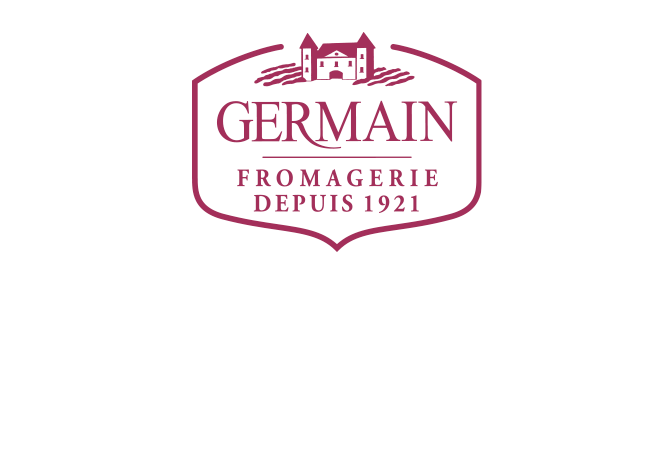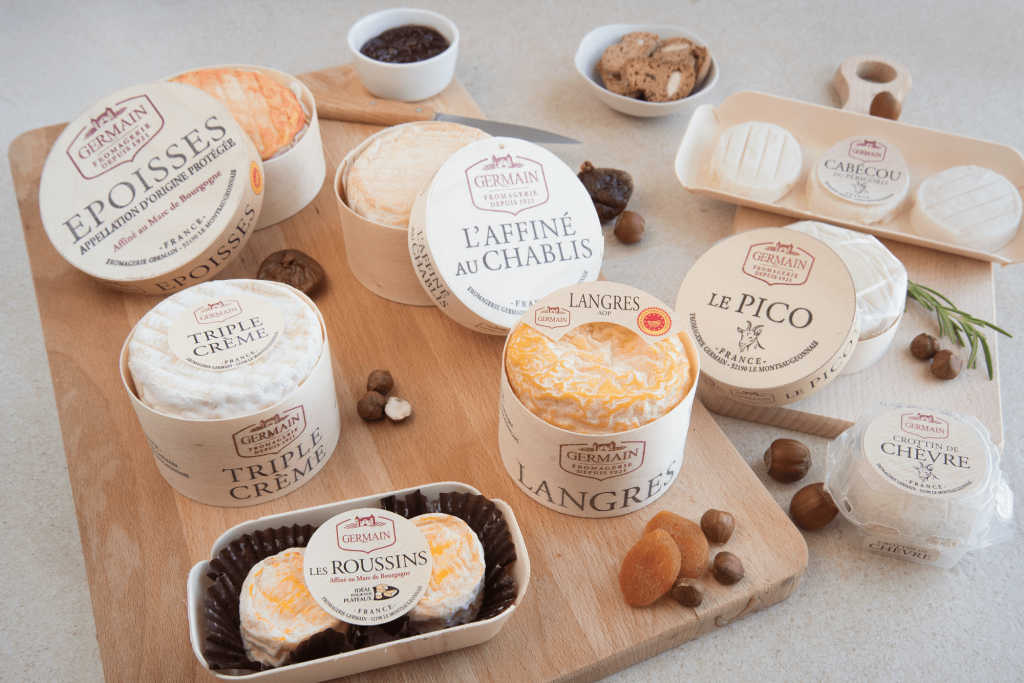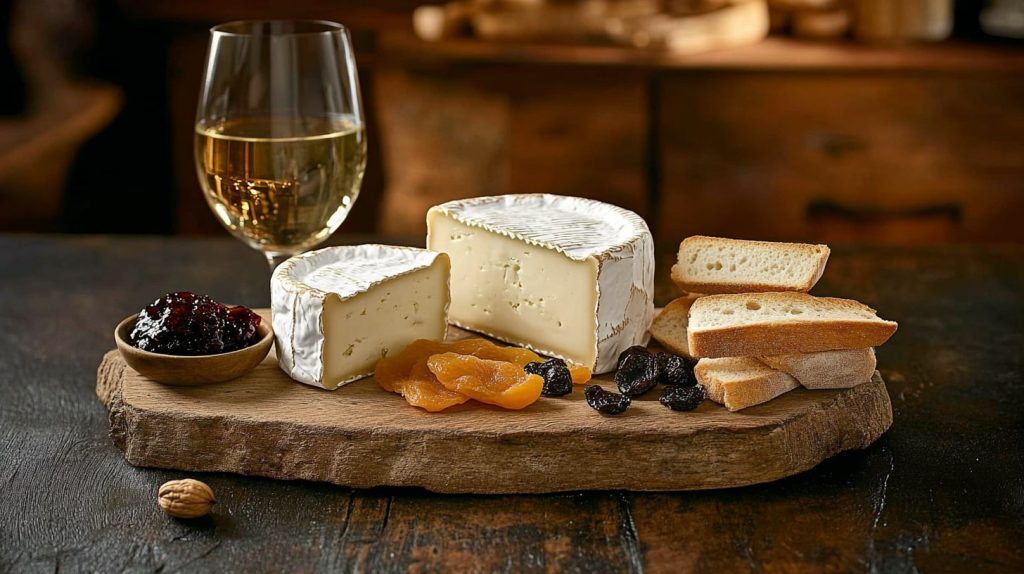The 3 Main Steps in Cheese Aging
Before detailing the specific care involved, let’s first understand the natural timeline of aging. This process is divided into three distinct, consecutive phases :
-
- The initial drying : The first step after salting, it allows controlled dehydration of the cheese surface, creating favorable conditions for the development of specific cultures (floras).
- Gradual drying : The intermediate phase where the cheese loses more moisture and begins to form its characteristic rind.
- True aging in the aging cellar (hâloir) : It’s in this specially designed aging space that the cheese fully develops its aromas and final texture under the watchful eye of the affineur (master ager).
At Germain, certain cheeses also benefit from manual brushing, an artisanal technique that contributes to the optimal development of their rind and aromas.
1. Selecting and Preparing the Cheese
It all begins with the meticulous selection of cheeses to be aged. At Germain, we only choose the best curds, the ones that promise optimal flavor development. Each cheese is then prepared according to its type : some are dry-salted others immersed in brine.
The length of draining before aging can vary from 12 to 48 hours, depending on the type of cheese. For fresh cheeses, the process ends as soon as the slow draining is complete, without going through the aging phase. This explains their moist texture and mild taste.
This initial stage greatly determines the final result.
2. Controlling Environmental Conditions
You thought cheese simply “grew old” peacefully ? Think again ! Aging is a precise science where every detail matters :
- Temperature : generally between 8°C and 15°C (46–59°F), depending on the type of cheese,
- Humidity : between 85% and 98%, a delicate balance to maintain,
- Ventilation : to prevent the growth of undesirable mold.
These conditions recreate a perfect ecosystem where ferments and microorganisms can work their transformative magic.
But where does this meticulous work take place ? In the hâloir (aging cellar). This specially designed aging room plays a key role in developing the organoleptic (sensory) characteristics of the cheese.
💡 Germain’s Tip :
The term “hâloir” comes from the French verb “hâler,” meaning to dry or brown in the open air. That’s exactly what happens to the rind of your favorite cheeses during aging !
3. Regular Monitoring and Maintenance
Aging requires daily attention, almost like parental care ! Cheeses are regularly turned, brushed, and sometimes washed with specific solutions (salted water, wine, beer…) to foster the development of the desired cultures.
Each type of cheese requires particular care : a Camembert doesn’t have the same needs as an Epoisses. This constant vigilance allows the affineur to intervene at the slightest sign of undesirable changes.
💡 Germain’s Tip :
“Touch” is a key sense for the affineur ! By gently pressing on a cheese with their fingertips, an experienced professional can determine its stage of aging with amazing precision.




